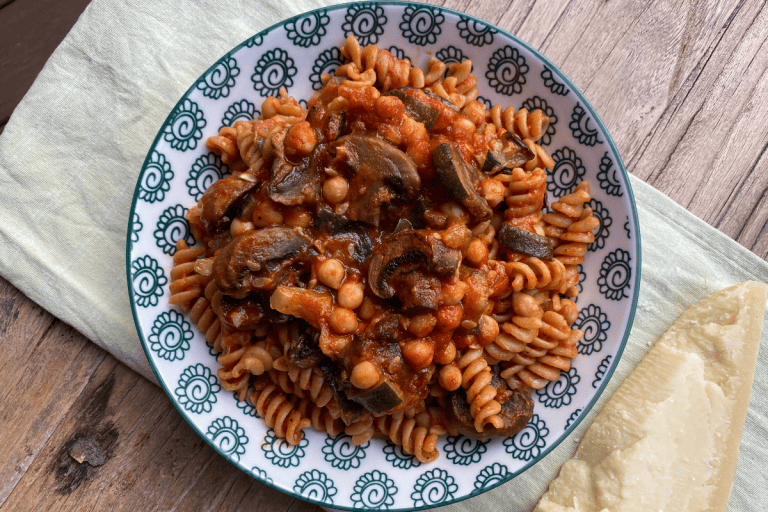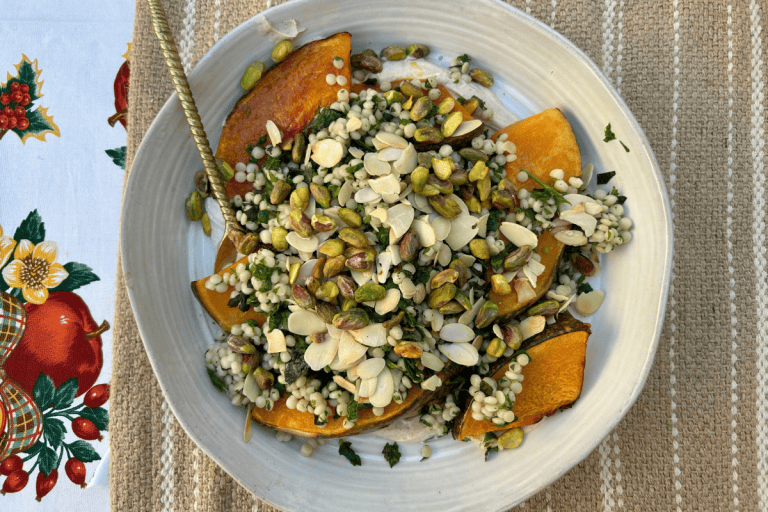Having a diverse and colourful diet is so important for both our physical and mental health. Think about all the different vegetables, fruits, nuts, grains, seeds and pulses that are out there. Each of them has their own unique taste, texture, smell and colour that will keep mealtimes exciting and interesting for you and your family.
There is so much we can ADD to our diets to help us feel good – note the emphasis on the word ‘add’. This is the way we want to be talking to our young people about food, we want to encourage them to try new things.
Language is everything when it comes to teaching our young people about food. We want to talk about food from a place of abundance, rather than from a place of restriction. I understand that for many people this is a difficult shift.
We are living in a time of ‘normative discontent’. Normative discontent is a term that’s been coined to describe just how normal it has become for us to feel bad about our bodies all or most of the time. Think about it, many of us bond over the shared, normal discomfort with our bodies. We talk about what we ‘hate’, what we are currently trying to ‘fix’, how guilty we feel about what we ate, or how ‘bad’ we are if we didn’t exercise that day. I think most of us would find it really difficult to imagine what it would be like to not live in that way.
When it comes to food, it’s not uncommon to find ourselves in conversation about the new meal plans we’re trying, what we’re currently eliminating or, let’s be honest, just how expensive grocery shopping is at the moment. Unfortunately, that mindset is one of scarcity. It places limitations on our food choices. There is so much that can be gained for ourselves and our families when we flick the switch from restriction to abundance (and it doesn’t have to cost you a small fortune, either).
As a starting point, let’s think about all the amazing things food freedom and a diverse diet offers us:
- Opportunities to connect with loved ones
- Long-lasting energy
- Improved cognitive function
- Ability to execute our skills optimally (both creative and physical)
- Muscle growth and development
- Strong hair, skin and nails
- Feelings of joy and satisfaction
Alright, now that we know the benefits of adding new foods to our diets, let’s put it into practice with these three family favourites.
1. Pasta bolognese

Bolognese is on high rotation in my family – it’s delicious, quick, easy and also tastes great for lunch the next day too! Here are a few things you can ADD to yours:
To the sauce:
- A can of chickpeas, brown lentils or cannellini beans – just make sure you rinse them well first.
- Roasted veggies – cut up some mushrooms, zucchini and/or eggplants, drizzle with olive oil and a sprinkle of salt. Roast for 30-40 minutes and then add them to your sauce at the end.
- Grated veggies – grate some carrots or zucchini and sauté with your onions at the start of the process and allow them to cook in the sauce.
Pasta choice:
- Wholemeal pasta – for extra fibre for sustained energy.
- Pulse pasta – an easy way to get legumes and pulses into your young person’s diet.
- Veggie-filled ravioli – spinach and ricotta, pumpkin and feta.
2. Meat and three veg

The classic meat and three veg is a staple in so many Aussie households and for good reason. It’s an amazing way to get lots of colour and fibre into our diets (in a way that is often quick). Here are a few ideas to inspire you to mix it up:
Choice of meat:
- Chicken – You can make burgers, cook up some tenders or roast a whole chook (or purchase one from the supermarket – SO convenient).
- Beef – Sauté some ground beef, make some patties, sear up a steak, slow roast a tenderloin on a Sunday.
- Salmon – Stir-fry, sear, bake.
- Whiting – Coat in breadcrumbs and shallow fry (like schnitzel), roast with some lemon, parsley, and olive oil.
- Tofu – Pop it in a stir fry, coat it in spices and pop it in the oven until it’s nice and crispy.
- Falafels – Make them yourself (this recipe from Recipe Tin Eats is amazing) or purchase some from the supermarket.
- Hummus – Make it yourself (try this recipe) or buy a tub from the supermarket and top it with some canned chickpeas, cumin and a sprinkle of salt.
- Eggs – There is nothing wrong with breakfast for dinner, alternatively you could whip up a zucchini slice, frittata, omelette or some fritters.
Veggies:
- In season (autumn) – Asparagus, beans, broccoli, beetroot, cabbage, carrots, cauliflower, cucumber, eggplant, lettuce, mushrooms, potatoes, pumpkin, snow peas, spring onion, corn, zucchini
- Frozen veggies – Peas, corn, carrots, broad beans, edamame
Grains:
- Brown rice, black rice, red rice
- Cous cous
- Barley
- Farro
- Pasta
- Sourdough
Make it FUN:
Change up how you cook your veggies – You could roast them with olive oil and salt, sauté with some soy sauce, sesame oil and a sprinkle of sesame seeds on top, steam veggies and drizzle with olive oil and top with some slivered almonds or toasted pumpkin seeds.
Incorporate grains, nuts and seeds – Mix your veggies together into a warm salad with some cous cous and top with some pumpkin seeds, almonds, pistachios, whatever you like! Get creative and have fun with what you find on special.
3. Burritos

Personally, I love a burrito bowl (I just make far too much mess when I eat it with my hands and would prefer to have the food in my mouth than on my clothes), but there are SO many ways we can play with this family favourite. We can:
Make it into a wrap:
- Protein-rich filling – Black beans, ground chicken/beef, chicken tenders
- FUN fillings – Brown rice, tomatoes, avocado, salsa, corn, cheese, shredded lettuce/cabbage, coriander, red onion
Make it a bowl:
- Start with a delicious base – rice, roasted sweet potato, rolled up tortillas, corn chips
- Source of protein (as above)
- FUN toppings (as above)
Lastly, and I know this may be controversial, but be transparent about what you’re adding to your young person’s diet. Hiding vegetables, tricking them into having alternative pastas, or not letting them know that you’ve added something they’ve openly said they don’t enjoy can be damaging. It fractures trust and increases feelings of doubt which may lead them not to try things in the future for fear of what you might have added to the food.
Food is a wonderful way to connect with the people in your life so I would encourage you to get the family together to help you in the kitchen, set the table and clean up afterwards too. Not only is it a massive help, but it also provides them with opportunities to learn new skills and try new things.
Want more recipe inspiration?
For lots of recipe inspiration I would suggest:
- Laura in the Kitchen
- Recipe Tin Eats
- Deliciously Ella
- Jessica Sepel
- Natural Harry
- Bondi Harvest
- Jamie Oliver
I would also like to acknowledge that adding new foods isn’t possible for all families. For some families it is hard to get everyone around the table, there might be conflict, there might be feeding differences, or there might be other circumstances that make eating and food really challenging. There are places to seek support listed here for you:










